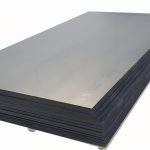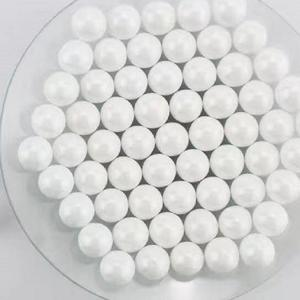Discover Premium Ceramic Products | Durability & Elegance United | Advanced Ceramics
1. Introduction
Just 24 hours ago, a major materials science conference in Germany highlighted breakthroughs in high-temperature ceramic processing, with silicon carbide crucibles taking center stage for their unmatched thermal shock resistance and chemical inertness. As industries from aerospace to cookware seek more durable, efficient materials, silicon carbide has surged in relevance—not just as a crucible material but across a wide spectrum of advanced ceramic products.

Silicon carbide crucibles are essential in foundries, laboratories, and semiconductor manufacturing due to their ability to withstand extreme temperatures—often exceeding 1600°C—without deforming or reacting with molten metals. But what makes them superior to other refractory options? And how do they compare with emerging alternatives like silicon nitride or boron carbide?
2. Silicon Carbide Crucible: Composition and Manufacturing
A silicon carbide crucible is typically made from high-purity silicon carbide powder, bonded with additives like silicon nitride, alumina, or carbon. The mixture is shaped via pressing or casting and then sintered at high temperatures. Two common manufacturing methods dominate the market: reaction-bonded silicon carbide (RBSiC) and sintered silicon carbide (SSiC).
RBSiC silicon carbide tile blocks, for instance, are created by infiltrating porous carbon preforms with molten silicon, yielding a dense, strong composite. This method is cost-effective and ideal for complex shapes like crucibles, burner nozzles, and ceramic columns. In contrast, SSiC offers higher purity and better performance at extreme temperatures but comes at a premium price.

3. Comparing Crucible Materials: Silicon Carbide vs. Alternatives
When selecting a crucible material, engineers weigh thermal conductivity, oxidation resistance, mechanical strength, and cost. Here’s how silicon carbide stacks up:
- Silicon carbide vs. boron carbide: Boron carbide is harder and lighter but far more expensive and less thermally conductive. While boron carbide excels in armor and neutron absorption, silicon carbide remains the practical choice for high-volume, high-heat industrial processes.
- Silicon carbide vs. silicon nitride: Silicon nitride crucibles—produced by specialized silicon nitride crucible factories—offer excellent thermal shock resistance and are used in aluminum and copper melting. However, they generally can’t match silicon carbide’s thermal conductivity or cost efficiency. Custom silicon nitride heat shields and silicon nitride rings are niche products, whereas silicon carbide crucibles dominate mainstream applications.

4. Beyond Crucibles: The Expanding Universe of Silicon Carbide Ceramics
Silicon carbide’s utility extends far beyond metallurgical vessels. Its hardness, thermal stability, and non-reactivity make it ideal for diverse ceramic components:
- Industrial parts: Silicon carbide burner nozzles, silicon carbide bricks, and silicon carbide ceramic tubes (including thermocouple protection tubes and porous ceramic tubes) are standard in furnaces and kilns.
- Plumbing and fluid systems: Silicon carbide ceramic piping and disc taps—like silicon carbide ceramic disc taps and quarter-turn taps—resist corrosion and wear in aggressive chemical environments.
- Grinding and machining: Silicon carbide grinding discs, sanding discs, and diamond grinding discs for pottery leverage its abrasive nature for precision finishing.
5. Silicon Carbide in Everyday Ceramics: From Ovenware to Tableware
Surprisingly, silicon carbide has entered consumer kitchens. High-end brands now offer silicon carbide ceramic baking dishes, casserole dishes with lids, and even silicon carbide ceramic dinner plates. These items benefit from even heat distribution and durability.
Examples include silicon carbide ceramic butter dishes with lids, ramekins, salad bowls, pasta bowls, and holiday-themed items like silicon carbide Christmas ceramic platters. Whether black, white, or blue-and-white porcelain style, these pieces—such as silicon carbide white ceramic plates or silicon carbide black ceramic plates—are marketed for both aesthetics and performance.
Even children’s tableware is getting the upgrade: silicon carbide ceramic children’s plates combine safety with scratch resistance. And for artists, silicon carbide ceramic plates for painting offer a smooth, non-porous surface that won’t warp under studio lights or heat.
6. Conclusion
The silicon carbide crucible remains a cornerstone of high-temperature industrial processing, but its influence is rapidly expanding. From silicon carbide ceramic columns in filtration systems to silicon carbide ceramic serving bowls on dining tables, this material bridges heavy industry and daily life. While alternatives like silicon nitride and boron carbide serve specialized roles, silicon carbide’s balance of performance, versatility, and affordability ensures its continued dominance across sectors.
Our Website founded on October 17, 2012, is a high-tech enterprise committed to the research and development, production, processing, sales and technical services of ceramic relative materials such as Why. Our products includes but not limited to Boron Carbide Ceramic Products, Boron Nitride Ceramic Products, Silicon Carbide Ceramic Products, Silicon Nitride Ceramic Products, Zirconium Dioxide Ceramic Products, etc. If you are interested, please feel free to contact us.
